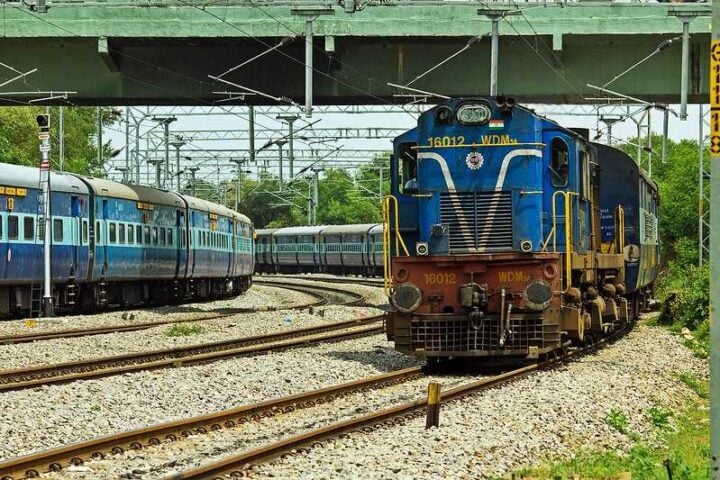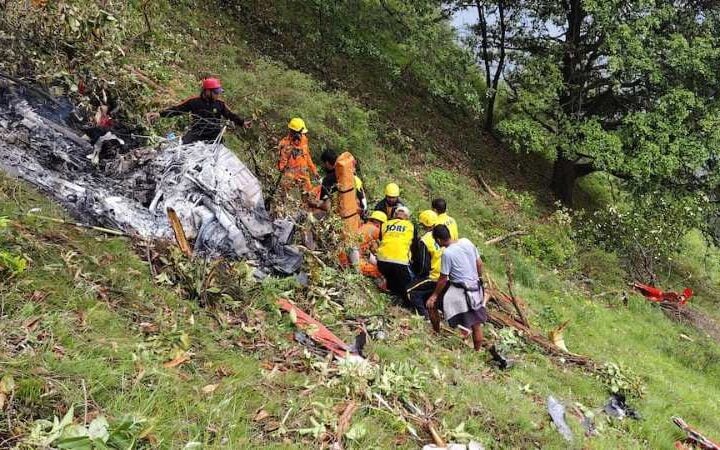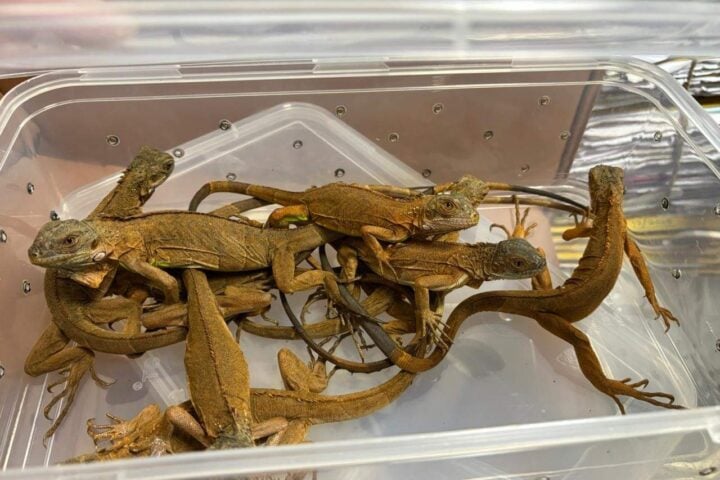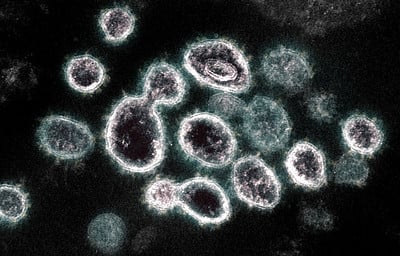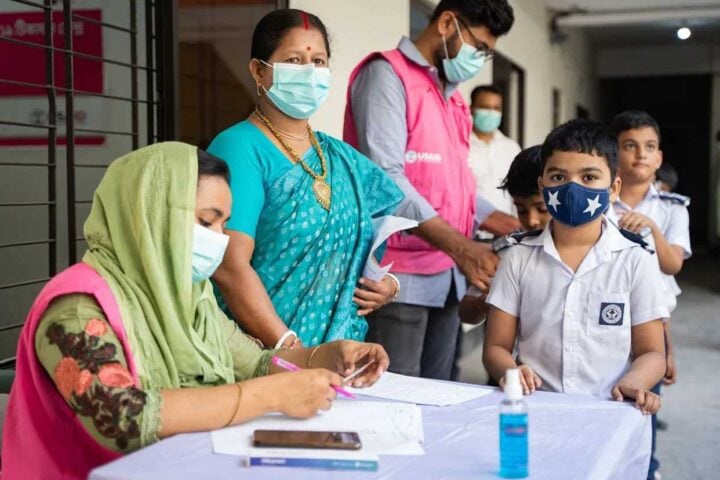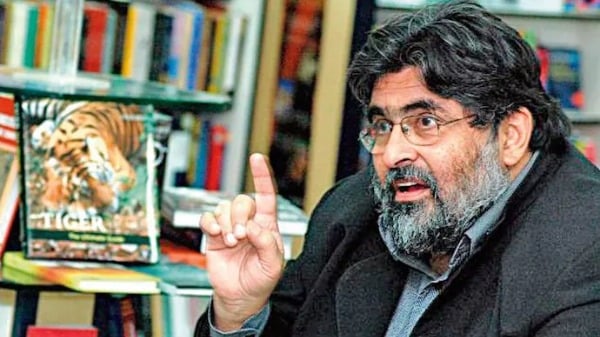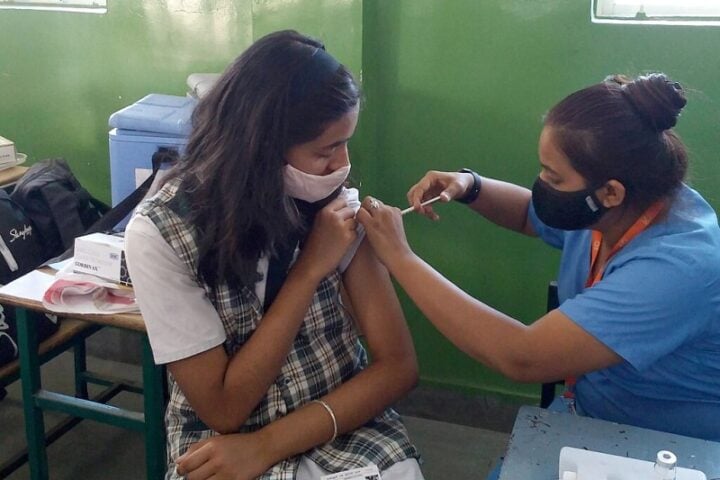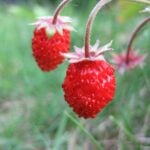My village Mudgad Ekoji was mainly dependent on rains for farming. Wheat, rice, Jawar(Sorghum), Harbara(Chickpea), Toor(Pigeon pea), cotton, sugarcane & oilseeds like ground nut, Jawas (Flax), Karola (Niger), Kardi (Safflower) were some of the crops grown in our farms at different periods of time. There were traditional instruments like Kulav(Plough), Tipan(Plough Tripod), Khurpe(Spade), Sickle etc used in different activities in cultivation of crops. Mangoes, Jambhal(Java Plum), Umbar(Figs), berry tree etc were some of the fruit bearing trees. Brinjals, chillies, tomatoes, ladies finger & pumpkin were some of the vegetables grown in our farms.
I was born on 23rd May1936 (as recorded in my School Leaving Certificate) in Mudgad Ekoji of Latur Dist. My father Dharmaji was the first literate in my family. He knew the Modi script. My mother Indrabai, though illiterate , was well- versed in our folk-lore. She used to sing Marathi Ovis (the Marathi poetic meter popularised by Sant Dnyaneshwar) composed by her while grinding wheat or sorghum (jawar) on the grinding stone. Life was simple, jawar roti & dal(lentils) made from toor(Pigeon pea) was our staple food.
There was a Palas tree (Butea monosperma) on our farm. Hurda, Ombya & Hula, a Rabi season delicacy, were made from the seasonal farm produce. There were 12 Balutedars like barber, blacksmith,vcarpenter, who used to get paid in the form of farm produce for the services rendered to the farmers. Cow dung was the only manure. Thus it was an almost self-sufficient village republic as idolised in Gram Swaraj concept of Gandhiji.
Cultivation of crops like fresh vegetables from the farm were available only for three-four months. They were onions, brinjals, pumpkins, ladies fingers and bitter gourd. At other times dry Chana (chickpea) leaves, dried cucumber, “Sandge”, “Pitla”& papad would replace vegetables. Groundnut chutney was an added menu. Mango & chilli pickles were more or less a permanent feature of meals as large clay pots were used to store those pickles. This is corroborated by Prof. Aniruddha Jadhav, former Principal of Shahu College, Latur, in his autobiography viz Manasi Samvad.
We had a cow or buffalo which was the main source of milk. In those days we used to have cultivation of crops Jawar, wheat, paddy, chana & toor as main cultivation crops. Once we used to have cotton farms too as there was a co- operative spinning mill at Latur. In those days farming was considered as the best profession, next came business & the last was service: Uttam Sheti, Madhym Vyapar, Kanishta naukari. My father-in-law, the late Shri Hanmantrao Patil was fond of Patrachi Bhaji. In those days Ambadi plant was popular as its leaves were used as vegetables while its bark was kept in water for a long time so that ropes could be made easily. Once my father planted a few tobacco plants. It had very broad leaves & pungent smell. Animals did not eat those leaves while civilians ate it and smoked it’s products like beedies(native smokable) & cigarettes.
The cultivation of crops such as sugarcane required a lot of water. Sugarcane grown in our farm was soft and sweet. Jaggery was used to make tea. Even now some people prefer tea made with jaggery and some hotels in Pune cater for Gulacha Chaya(Jaggery tea). In my childhood we used to get Moras sakhar or rock sugar. It was called Moras as it was imported from Mauritius cuivated by labourers taken from India. Today the descendants of those workers are the rulers of that beautiful island.
Back then milk was not sold. Curds , buttermilk and ghee were abundant. It is said that Indra, the king of Gods, cannot get buttermilk as he lives in the milky ocean:Takram Shakrasya durlabham. I used to enjoy bananas & guavas purchased from Savalsur while going to Masajista for the annual pilgrimage of Premnath Maharaj. It was believed that a child thrown from the terrace of Samadhi of this saint & caught on a wide cloth held by many people, would have along life. This was the idyllic state of life, free of pollution & full of social harmony. Long wheat or Jod Gahu was cultivated in our field. Sweet potatoes were also available for fasting on Ekadasi days. Bulls were engaged for work on the farm. Pola was the festival for the oxen as they were decorated & fed with sweets. It was a holiday for them. Other popular festivals included Gudi Padva (Hindu New Year), the first day of Chaitra month. Diwali, Dasara and Ganesh festival were celebrated with a lot of fun & frolics.
About Dasara or Vijayadashami it was said that Dasara was a great festival as there was a great fun: Dasara san motha, nahi ananda tot . Diwali song ran thus: Ali Dipavali , gadyano ali Dipvali, roj roj Shala, pure to ala kanthala, char divas ata, gadyano kasli na chinta, ladu Karanjya Shankarpali Khan kadboli, gadyano ali dipvali. Ganpati is the most favourite deity of Maharashtra as a 12 day festival is celebrated in the first half of Bhadrapada month. Ganesh mela is organised during this period. One of the popular songs in my school days was : Darshanas jau jani, jau ya Ganasadani. Ganesh fest is also celebrated in the month of Magha in some parts of Maharashtra. Thus the people preferred farming. I too used to go to our farm whenever possible. All these festivals were occasions for sweet and tasty delicacies made from the seasonal produce.
Jawas(Linen Flax), Karola(Niger seeds), Kardi(Safflower), Groundnut were some of the oilseeds grown in our area. Traditional oil mongers called Telis used an ox which would go round the oil – extracting apparatus viz Ghana. We used to camp in the farm during harvest time. Standing Jawar crop was plucked with its roots from the ground while singing thus : Bhalari dada, Bhalgadi dada Bhal.It was a harvest song. There were 12 Balutedars who provided services to entire village community i.e. barbers, carpenters, blacksmiths etc. who were paid in the form of food grains annually. In this way my village was a more or less self – sufficient community like many other rural settlements.
Well, there was a big change in my food habits as I joined a college in Hyderabad in 1955 for my Intermediate (equivalent to present higher secondary) class. Until that time I had never tasted tea . But in that big city I became an addict of tea. There we had early lunch in one of the eateries or from a tiffin box provided by a dabbawala. A meal consisted of chapatis, a small bowl of rice, varan (Curry), a sabzi (Vegetable) & a chutney. Usually we used to be fed up with the same kind of food. So there was often a change of tiffinwala every one or two months.
Interestingly these food suppliers used to wait for their money as we used to get money from our parents through M.O i.e mone order or by hand whenever it was available.
Thus it was a polished rice & sugar in tea that l became accustomed with. I still remember the flavour of. tea served in Irani hotel which was open for almost 24 hours. When I joined Sainik School, Kazhakuttam, Kerala, after marriage & a one year stint as a Head Master of Shri Sant Gadge Baba High School, Degloor, there was a major change in my food pattern. In Kerala I became comfortable with boiled rice. I also became accustomed to meals prepared in coconut oil.
It was the time of Green Revolution as wheat was issued through ration shops. The wheat supplied at subsidised rates was American one, made available under P L(Public Law) 480 by USA. Agricultural Universities were also a result of this arrangement. Meanwhile, I also began to eat a raw arecanut(Supari) which was available abundantly. Idli Sambar, Dosa, Uthappa, Puttu, Avial, Payasam & Rasam became a part of my menu in addition to Chapati and rice. Kerala Agriculture University was started at Velayani while 4 Agri ‘varsities were set up in Maharashtra. The traditional organic fertilisers and pesticides made from cow dung, domestic organic waste, neem and other organic materials were gradually sidelined. Chemical based fertilisers and pesticides became mainstream. A White Revolution was ushered in by late Dr Varghese Kurian in the form of AMUL(Anand Milk Union Limited ). Due to the Green Revolution Machines replaced bulls. Tractors & harvesters made agri operations industrial. Thus it was a very exciting but uncertain time in my life.
Farm income changed as high yielding varieties of seeds yielded more agricultural produce accompanied by insecticides & pesticides. This was more evident in Punjab, Haryana & areas around, where there was abundance of water. But the Green Revolution has also gave birth to new problems. The famous ‘Cancer Express’ in Punjab is a direct outcome of chemical based farming. Small farmers find it difficult to meet the cost of HYV (high yielding varieties) seeds accompanied by the costlier fertilisers, insecticides & pesticides. According to Dr. Vandana Shiva, environmental activist the effect of Green Revolution is increased indebtedness of farmers. Hence an increase in number of suicides of farmers. In Marathi there is a saying that a farmer is born in debt , grows with simple interest & dies with compound interest: Shetkari janmato karjat, vadhto saral vyajat ani marato chakravadh vyajat. Dr Shiva says that there is another GR which is sponsored by MNCs like Monsanto & other private companies who are more interested in profit rather than public welfare. But the farming community has evolved a new strategy to overcome this obstacle by adopting a new model of small subsistence farming. Another method is to have a homestead in the farm itself so that farm & home become a harmonious unit as practised in Kerala. New age commune in Kerala is another concept where farmers form a co- operative farming society so that they can combine all their resources- both physical as well as financial to increase agri-income.
A new era has begun in agro-economic management as the farmers have started poultry, fishery & allied activities to support their main income from farming. Thus Baliraja or a farmer who is referred to after the great Mahabali, has become stronger as a member of Kisan Sabha or a Shetkari Sanghatana. Cultivation of crop Luckily neither my father nor me suffered from any loans taken from co-op society or a land mortgage bank as I too had become a member of my village multi-purpose co-op society. But a farmer is always at the receiving end whenever there is a change in regime.
Now to face the aftermath of this revolution many alternatives have been suggested. A farmers commune is one of the remedies where all the members are equal partners in organising the agri operations. They can get loans from the village multi- purpose co-operative societies. Another alternative is a farm homestead where a small agriculturist lives in a farmhouse while cultivation the crops. Recently the farmers lobby has become quite strong as they could force the Government to withdraw the new farm laws like in India.




